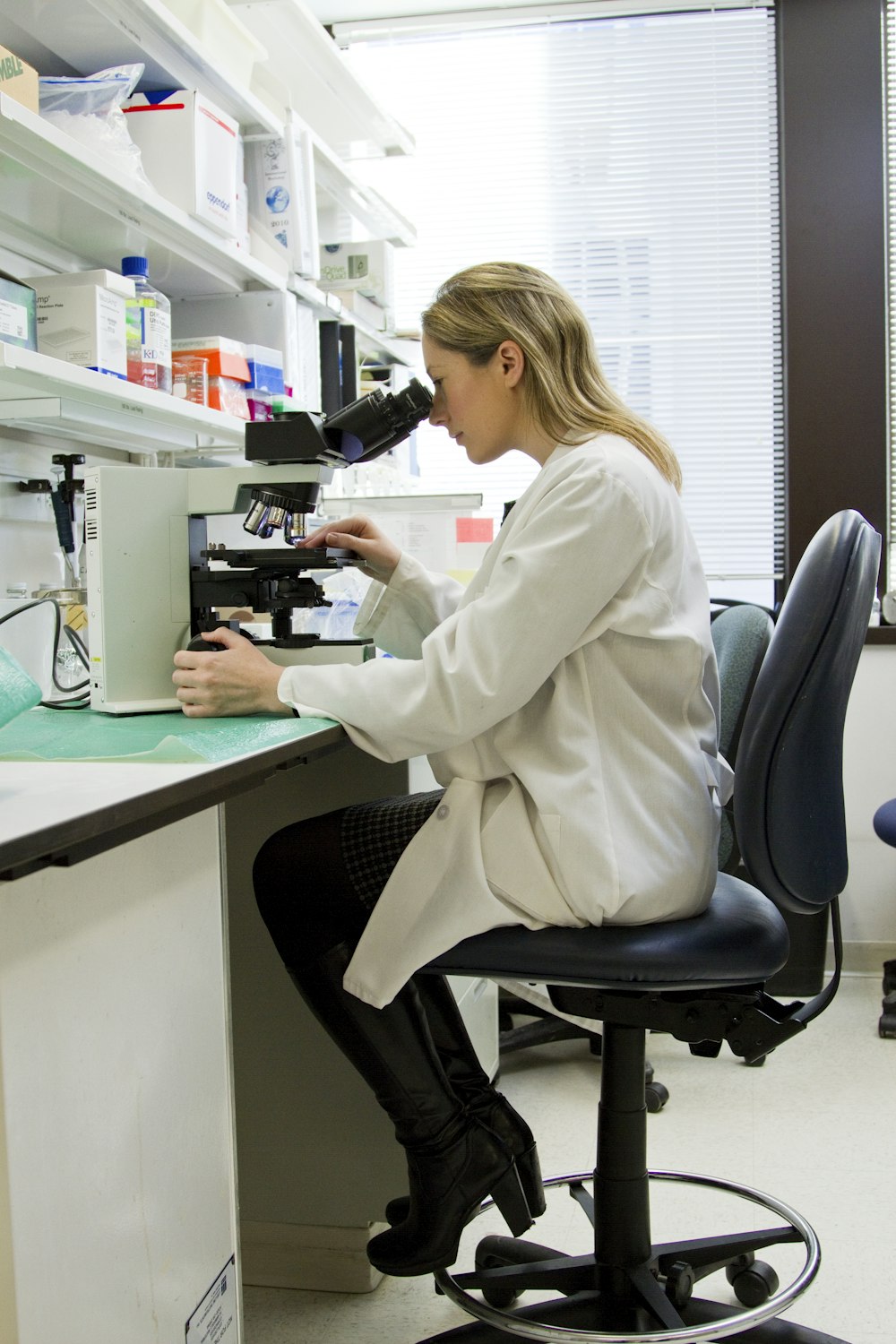High School Biohackers: Editing Fruit Fly Genes with CRISPR
From Classroom Lab to Genetic Frontier
Explore the ScienceFrom Classroom Lab to Genetic Frontier
Imagine a high school biology class. The smell of agar, the gentle hum of incubators, and the familiar sight of fruit flies buzzing in their vials. For decades, students have crossed red-eyed and white-eyed flies, observing the classic rules of inheritance laid down by Mendel. But what if today's students could do more than just observe inheritance? What if they could write it?
Welcome to the new frontier of science education, where advanced genetic engineering has entered the secondary school curriculum. Using a revolutionary tool called CRISPR/Cas9, students are no longer passive observers of nature's code; they are active editors. This article explores an exciting, real-world application: how students can use CRISPR to create a custom genetic tool known as a Drosophila LexA line, turning their classroom into a genuine molecular biology lab and democratizing science one fruit fly at a time.
The Genetic Scissors: Demystifying CRISPR/Cas9
Before we dive into the experiment, let's break down the superstar tool: CRISPR/Cas9.
What it is
Think of CRISPR/Cas9 as a pair of programmable genetic scissors. It's a system borrowed from bacteria, which they use as an immune system to chop up the DNA of invading viruses.
How it Works
Scientists design a guide RNA to match the gene they want to edit. This RNA leads the Cas9 enzyme to that exact spot in the genome where it makes a precise cut.
Key Players
Cas9
The "scissors" themselves. This is an enzyme that cuts the DNA double helix.
Guide RNA (gRNA)
The "GPS" or "programming code." This is a small piece of RNA designed to find a specific DNA sequence.
This is the core technology that allows high school students to perform feats of genetic engineering that were once the sole domain of PhDs in multi-million-dollar labs .
The Mission: Building a LexA "Driver" Line
So, what exactly are our student scientists creating? Their mission is to generate a Drosophila LexA line.
In genetic research, scientists often want to study a specific gene or cell type. To do this, they use a "Gene X" / "Gene Y" system. The LexA/LexAop system is one of these powerful tools .
The LexA "Driver"
This is the part our students are building. It's a genetic switch that can be designed to be active only in certain cells—for instance, only in neurons, or only in muscle cells.
The LexAop "Responder"
This is a piece of DNA that carries a "reporter" gene (like one that makes a fluorescent protein) and will only be turned on when the LexA driver is present.

By creating their own custom LexA driver lines, students can design experiments to make specific fly tissues glow green, control neuron activity, or test gene function in breathtakingly precise ways.
A Day in the Lab: The High School CRISPR Experiment
Here is a step-by-step breakdown of the crucial experiment a class would perform to create their very own LexA fly line.
Methodology: A Step-by-Step Guide
Design & Preparation
Students use free online software to design a gRNA that targets a specific, "safe" location in the fruit fly genome—a region where inserting new DNA won't harm the fly.
Microinjection
This is the most technically demanding step. They inject a solution containing Cas9 protein, gRNA, and a donor DNA plasmid into a fruit fly embryo.
The Cut & Paste
Inside the embryo's cells, the Cas9/gRNA complex finds the target DNA and makes a cut. The cell's repair machinery then inserts the LexA gene into the fly's DNA.
Rearing & Crosses
The injected embryos develop into adult flies (G0 founders). They are crossed with other flies to see if they pass the new LexA gene to their offspring (G1 generation).
Selection & Confirmation
From the G1 generation, students look for flies with visible markers. They then use DNA extraction and PCR to confirm the LexA gene insertion.

Results and Analysis: Success in a Vial
The moment of truth comes when students examine the G1 generation under a microscope. A successful experiment will yield flies that clearly show the marker trait. DNA confirmation via PCR provides the final, undeniable proof.
Scientific Importance
The success of this experiment is monumental on two levels. For the field of science, it creates a new, valuable genetic tool (the LexA line) that professional researchers can use. For education, it proves that complex molecular biology is no longer out of reach. Students don't just learn about CRISPR; they do CRISPR .
Data from the Classroom Bench
Typical Student Experiment Outcomes
This table shows the expected results from a single microinjection session.
| Injection Batch | Embryos Injected | G0 Surviving | Fertile G0 | LexA Lines |
|---|---|---|---|---|
| A | 150 | 45 | 8 | 2 |
| B | 150 | 52 | 11 | 3 |
| Total/Average | 300 | 97 (32%) | 19 (20% of G0) | 5 (26% of fertile G0) |
Confirmation Methods
A breakdown of the techniques used to verify genetic modification.
| Method | Detects | Success Rate | Time to Result |
|---|---|---|---|
| Phenotypic Screening | Visible marker | ~95% | 10-14 days |
| PCR & Gel Electrophoresis | LexA DNA insert | ~85% | 1-2 days |
Student-Designed Follow-Up Experiments
Once a LexA line is made, students can use it in cross-disciplinary projects.
Neuron Imaging
Field: Neuroscience, Cell Biology
Expressing GFP in neurons to image brain structure and understand neuroanatomy.
Muscle Function
Field: Genetics, Physiology
Activating a gene in muscle cells to study flight ability and link gene function to behavior.
Behavioral Studies
Field: Behavioral Neuroscience
Silencing neurons to test their role in learning and memory through behavioral assays.
The Scientist's Toolkit: Research Reagent Solutions
Here are the key materials students use to make this experiment possible.
Cas9 Protein
The "scissors." The enzyme that makes the double-strand break in the DNA at the target location.
Guide RNA (gRNA)
The "GPS." A synthetic RNA molecule that guides Cas9 to the specific DNA sequence to be cut.
Donor DNA Plasmid
The "repair template." Contains the LexA gene, which the cell uses to repair the cut.
Drosophila Embryos
The "living canvas." Young fruit fly embryos that can incorporate new DNA as they develop.
Fluorescence Microscope
The "detective." Used to screen for successful gene insertion by visualizing marker proteins.
PCR Thermocycler
The "DNA copier." Amplifies specific DNA regions to confirm the presence of the LexA gene.
The Future is in Their Hands
The ability to generate custom Drosophila LexA lines in a secondary school class is more than just a neat experiment; it's a paradigm shift.
It breaks down the ivory towers of science, empowering the next generation with not just knowledge, but with tangible skill and creative control over the tools of biological discovery. These students are learning to read, write, and edit the language of life, preparing them to solve the genetic challenges of tomorrow. The fruit fly vial has become a portal to the future, and it's sitting on a classroom lab bench.

